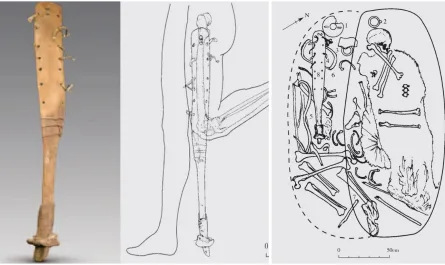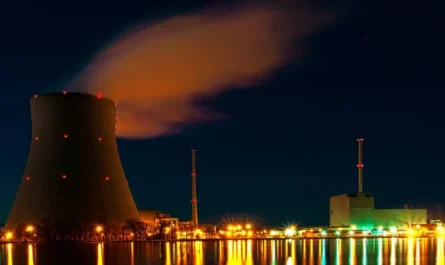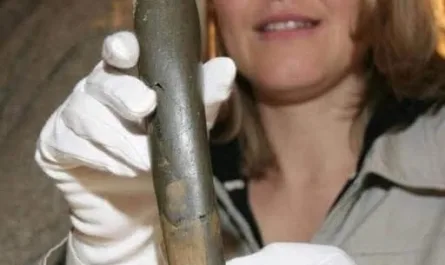Disclaimer: Trespassing on railroad property is illegal and extremely dangerous. The Hoosac Tunnel is still an active freight corridor. Do not attempt to enter or explore the tunnel or any adjacent railway infrastructure. This article is intended to document history, not to encourage unauthorized exploration.
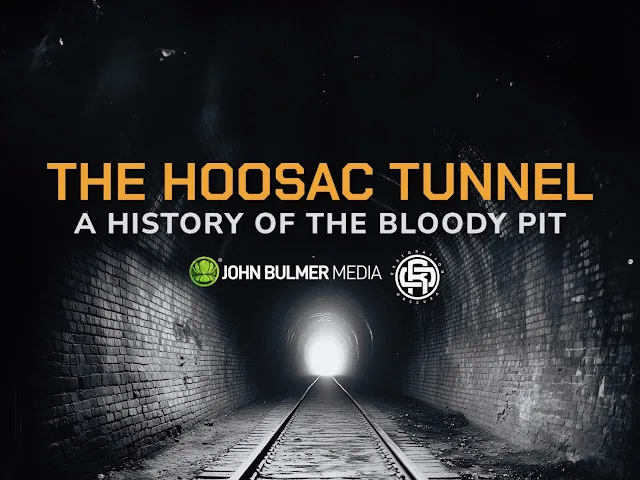
The Hoosac Tunnel cuts a scar through the Berkshires—4.75 miles of rail-driven ambition bored straight through the heart of Hoosac Mountain in western Massachusetts. Finished in 1875 after more than two decades of brutal labor, it stands as one of the great 19th-century engineering feats. It also stands as one of the deadliest. Nearly 200 men died building it. Some say the real number is higher, but the bodies—and the records—disappeared under rock, water, or silence.
That’s why they call it the Bloody Pit.
It sits in a steep, wooded valley along the Deerfield River. The kind of place where cell signals fade and sound behaves differently. You notice how quiet it gets. How the trees feel like walls. There are scattered farmhouses, skeletal bridges, and the crumbling remains of the Yankee Atomic Electric Plant nearby, shut down in 1997.
I’ve returned to that eastern portal many times over the years, lugging heavy gear and old lenses. Each time I come back, I tell myself I’m here to take a photo—but that’s never the whole truth.
There’s something about the tunnel that draws me in. It’s quiet, but the kind of quiet that makes you hyper-aware—of the wind, your breath, the sound of gravel underfoot. I feel it physically. It’s a portal in both the literal and metaphorical sense—cutting through a mountain, but also connecting the present to everything buried in the past, hidden in nearly 5 miles of darkness.
I stepped inside once, back before post-9/11 security locked everything down. I didn’t go far—maybe a hundred and fifty yards—but it was enough. The air was colder, heavier. My headlight swept over rusted rails and damp stone walls. Walls with witness marks. The acoustics were wrong—every sound echoed in a way that made you feel disoriented. Even my breathing sounded foreign. I got out fast.
Sound behaves differently inside that tunnel. Its 4.75-mile length acts like an instrument, the air constantly moving, humming with a low, uneasy resonance—a sound built from a million smaller ones, like wind shaped into the ghost of an approaching train. It is the sound of tunnel breathing. The illusion is powerful: something’s always coming. Combined with the halo of daylight at the entrance, it keeps you on edge. Time bends in that space. Anxiety builds fast. It’s not a place to linger.
And when a train does come through, it pushes a wall of air ahead of it like a slow, massive wave. As it exits, it draws the tunnel’s breath behind it, creating a vacuum that drags leaves, trash, and silence into a spinning vortex.
Before 9/11, exploring places like this was easier—still risky, still not legal, but less closely watched. For some of us, especially in youth, that window of access offered a seductive mix of danger, curiosity, and adrenaline. We didn’t think in terms of trespassing laws or risk assessments—we just felt the pull of forgotten places, and the need to see what was inside. That doesn’t make it right. It just makes it real. Now it’s locked down for good reason. And just to be clear: standing on or exploring train tracks is dangerous and illegal. Don’t romanticize it. It’s not worth it.
But stories like this—places like this—still matter. They are essential. Not just as history, but as reminders. The Bloody Pit is not just a haunted tunnel; it’s a monument to labor, loss, and the psychological weight of forgotten sacrifice. These are the kinds of stories we need to keep telling.
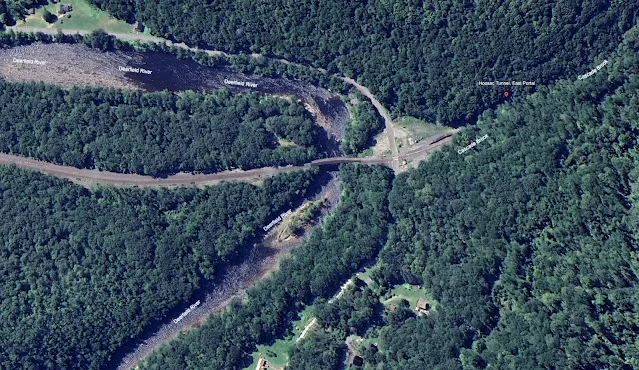
Google Earth
The Tunnel’s Deadly History
Construction began in 1851, part of a larger push to connect Boston to New York’s markets by rail. But the mountain didn’t yield easily. The rock was dense, the terrain hostile. Workers used black powder, and later nitroglycerin—dangerous in the best conditions, fatal in the worst. Progress was slow, and accidents were constant.
The work was done largely by hand in the early years. Laborers drilled holes using a two-man method known as “double jacking”: one man held a steel drill while another struck it with a sledgehammer, rotating it slightly between each blow. These holes were then packed with black powder and ignited to blast through the rock. The debris—or “muck”—was cleared by hand carts. It was grueling, repetitive, and dangerous work. Poor ventilation meant workers often inhaled dust and fumes. Lighting was limited to candles or oil lamps, which only added to the risk once nitroglycerin came into play.
Later in construction, compressed air drills and steam-powered hoists were introduced, along with a central vertical shaft nearly 1,000 feet deep to speed excavation and improve ventilation. But the shaft itself became the site of the tunnel’s most infamous tragedy.
On the night of October 17, 1867, thirteen men were working deep within the Central Shaft when an accident set off a deadly chain of events. A candle left burning near a leaking container of nitroglycerin fumes ignited a fire. At first, the blaze seemed minor—until it reached the supply of explosives and triggered a second, far more violent blast.
Above, the hoisting platform—used to move men, equipment, and debris—was obliterated. Heavy machinery, steel tools, buckets, and massive timbers were blown skyward before crashing back down into the open shaft. Below, the fire spread rapidly. Flames engulfed the wooden cribbing that lined the shaft. Smoke and toxic gas poured into the chamber. The lift system was gone. Escape was impossible.
Some of the thirteen died instantly. Others were injured and trapped in the rising smoke. They screamed for help, but nothing could be done. The shaft soon filled with water—either from broken pipes or firefighting attempts—and what hadn’t burned was drowned. Crews on the surface tried to organize a rescue, but the wreckage was impassable, the fire too intense. They could hear men below, but they couldn’t reach them.
It took nearly a year to clear the collapsed debris and pump out the water. When the bodies were finally recovered, they were skeletal and waterlogged, disfigured by fire and time. The smell was said to be overwhelming. Survivors described it as something that clung to you long after you left the site. The men were buried in a mass grave. Their names were barely recorded, if at all. For many, the shaft became their tomb.
Afterward, workers refused to go near it at night. Some claimed to hear voices rising from the darkness. Others said the air around the shaft never felt the same again—heavier, colder, and somehow aware.
The tragedy at the Central Shaft wasn’t just a deadly accident—it became a turning point in the tunnel’s story. It fused engineering with death. Progress with grief. And it cemented the tunnel’s other name in local memory: the Bloody Pit.
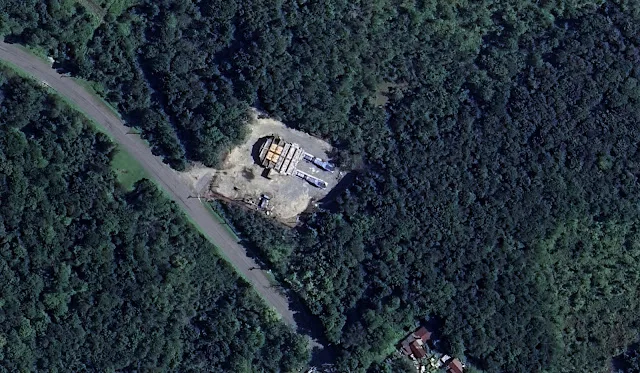
Google Earth
Hauntings, Legends, and Unanswered Deaths
From there, the stories deepened. Men spoke of voices in the dark. Of tools that moved. Of cold hands brushing their shoulders. Workers began refusing to enter after sunset. And still, the accidents came.
One of the earliest and most enduring legends is that of Ringo Kelley. In 1865, Kelley allegedly set off an explosive too early, killing two fellow workers. He disappeared shortly after, only to be found dead a year later in the exact spot where the accident occurred. He had been strangled. No one saw or heard anything. Some believed the spirits of the dead had taken their revenge.
Then there are the Phantom Workers—ghostly laborers still seen wandering the tunnel. Dressed in 19th-century work clothes, they appear with lanterns and tools. Visitors report the sounds of picks and shovels striking rock, even in empty sections. One lesser-known story tells of faces in the smoke—after the Central Shaft explosion, men claimed to see the faces of the dead forming in the mist rising from the shaft—mouths open, eyes hollow.
In June 1872, Dr. Clifford Owens and a construction superintendent entered the tunnel to investigate persistent reports of strange sounds and ghostly figures. Two miles in, they encountered something neither man could explain: a headless apparition, glowing faintly blue, floating just above the track bed. It lingered in silence before retreating into the darkness. Owens later described the experience as “profoundly chilling,” not just for what they saw, but for how deeply it disrupted their sense of reality.
Some visitors report hearing their names called faintly in the dark, only to find no one there. Others describe a sudden drop in temperature, as if walking through an invisible curtain of cold. There are accounts of footsteps pacing just out of sight, and distant knocks that echo rhythmically against stone, as if some buried crew is still at work. A few have claimed to see lights in the tunnel at night—not from trains, but faint blue glows that vanish when approached. One persistent tale describes a single bluish light seen deep in the tunnel, bobbing steadily as if carried by an invisible hand. Rail workers have reported seeing it from the eastern portal late at night, moving in rhythm like a lantern swaying with a person’s step—only to have it disappear mid-track, with no footsteps, no figure, and no explanation. Some believe it’s a spectral echo of a worker lost during construction, still making his rounds. Others think it’s connected to the Central Shaft victims—restless energy that never left the tunnel.
Even today, the stories persist. Paranormal investigators still visit, capturing strange sounds and unexplained motion. But some of the most convincing accounts come from people with no interest in ghosts—hikers, rail workers, and passersby who sense something they can’t explain.
Why I Keep Coming Back
I’ve been photographing the Hoosac Tunnel and places like it for years. Always from the outside now. I don’t go in. The tunnel’s still active—freight trains come through that narrow black corridor several times a day. There’s no margin for error in there. If you’re inside when a train comes, you don’t walk out.
But I keep returning. Not for the ghost stories. Not just for the engineering. Because this place still holds something that matters. It’s about the cost—about what got buried here. Unnamed laborers. Broken bodies. The kind of industrial ambition that measured lives in progress.
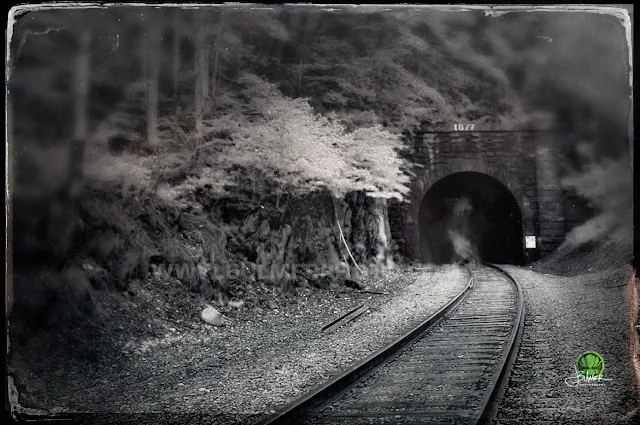
I use antique equipment for a reason. Large-format cameras, plates, long exposures. Not out of nostalgia, but because the process slows me down. It makes me pay attention. There’s no automation, no shortcuts—just light, timing, and patience. It’s not far off from what a 19th-century photographer might’ve carried into the field. That continuity matters. It makes me feel responsible to the story I’m telling.
Early photographers believed the camera could slow time—stretch it, maybe even see beyond it. Some thought it could peer into the next world. In some ways, they weren’t wrong. Photography can stop time. It can reveal what happens over minutes, hours, or days. It shows what we miss. What we don’t notice. What might be there whether we see it or not.
Some photographers chase beauty. I’m after presence. Places where time hasn’t fully moved on. Where something unresolved is still hanging in the air. The Hoosac Tunnel is one of the heaviest I’ve ever stood in front of.
And maybe I’m not photographing it to document it. Maybe I’m just trying to understand what it still has to say.
That need to understand extends beyond this tunnel. I’ve always been drawn to places close to home—spaces heavy with local history that most people pass without noticing. There’s something grounding about exploring what’s right here, where stories live just under the surface.
I’ve found that the further I go into familiar landscapes, the more they reveal. Old mills, foundations in the woods, rusted infrastructure—each place has its own version of a past we’ve half-forgotten. Documenting them feels like a kind of preservation, but also an act of respect.
Not everything historic needs to be grand. Sometimes the most meaningful stories are the ones rooted in the places we think we already know.
What is Restoration Obscura?
The name itself is steeped in the language of photography. The camera obscura—Latin for “dark chamber”—was an early tool for capturing the world, projecting light and shadow into a fleeting image. Restoration Obscura reverses that process, pulling what has faded into darkness back into focus.
Through research, photographic restoration, and historical storytelling, I do more than repair old photos—I reframe history in a way that makes it tangible, relatable, and alive. History isn’t static—it evolves with the stories we rediscover. Restoration Obscura ensures those stories are not only preserved but seen, understood, and felt.
Source: johnbulmermedia.com
